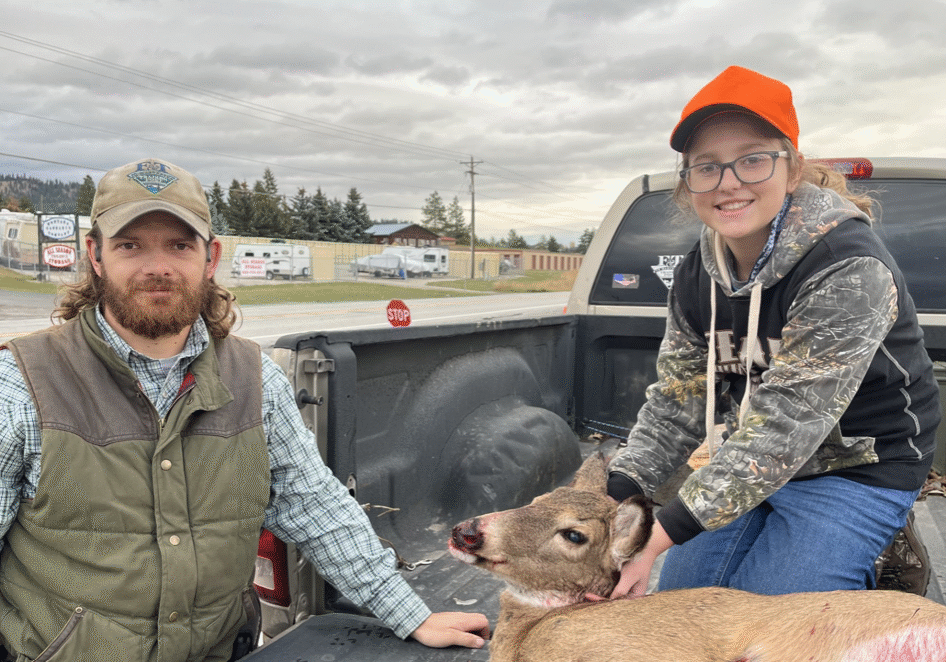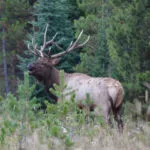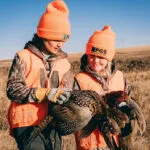Montana Big Game Season Opens Strong With Increased Hunter Participation in Western Regions
Nearly 4,500 hunters visited check stations during opening weekend despite weather challenges, with mixed harvest results across western regions
By Staff Writer
Oct 28, 2025
MONTANA — Montana’s 2025 general big game hunting season opened with strong hunter participation in western regions of the state, with nearly 4,500 hunters visiting check stations during opening weekend despite challenging weather conditions.
Montana Fish, Wildlife & Parks reported increased hunter turnout in both northwest and west-central Montana, with 2,549 hunters passing through west-central stations compared to 2,378 last year, and nearly 2,000 hunters stopping at northwest Montana stations.
“We had a little wind, rain, and snow this weekend, but that didn’t seem to slow anyone down,” said Kirstie Yeager, FWP wildlife biologist in the upper Clark Fork. “Hunters enjoyed their time in the woods and brought in a few nice animals.”
The opening weekend results showed mixed harvest patterns across species. White-tailed deer harvests increased in both regions, with west-central Montana stations checking 80 white-tails compared to 66 in 2024. Northwest Montana also reported increased white-tailed deer harvests over last year.
Elk harvests remained steady, with west-central stations recording 105 elk compared to 107 in 2024. Mule deer numbers showed regional variation, with west-central Montana checking 27 compared to 18 last year, while northwest Montana reported decreased mule deer harvests.
At the Darby check station in the Bitterroot Valley, hunters brought in 87 elk and 23 deer, compared to 72 elk and 18 deer on last year’s opening weekend.
“It was a slower start on Saturday due to weather, but the weather wasn’t as bad as initially forecasted, so the harvest picked up on Sunday,” said Rebecca Mowry, FWP wildlife biologist in the Bitterroot Valley. “We had a couple kids come through the Darby station with their first elk, as well as one adult.”
Disease Management Remains Priority
Chronic wasting disease testing has become a critical component of Montana’s hunting season management. FWP officials emphasized that hunters play an important role in tracking the disease’s prevalence and spread.
“When hunters have their harvested deer, elk and moose tested for CWD, they provide key insights into the effectiveness of CWD management, the disease’s prevalence and its presence,” according to FWP’s press release.
While CWD testing remains voluntary in most areas, mandatory testing requirements exist for certain hunting districts near Libby. All hunters using Deer B License 199-20 in hunting districts 100, 103 and 104, or Deer Permit 103-50 in district 103, must have their animals tested.
FWP is hosting a CWD sampling clinic at its Kalispell office Thursday from 5-6 p.m. to teach hunters how to collect lymph nodes for self-testing. Hunters can bring recently harvested deer or elk heads, or FWP will provide specimens for training.
Testing locations include CWD sampling stations, most FWP offices, or hunters can collect samples themselves and mail them to the Wildlife Health Lab in Bozeman. FWP strongly recommends receiving negative test results before taking animals to meat processors or donating to food banks.
Additional Challenges and Reminders
Wildlife officials noted that a recent outbreak of epizootic hemorrhagic disease is causing mortalities in white-tailed deer across western Montana. These carcasses, concentrated around water sources, are attracting both grizzly and black bears currently preparing for hibernation.
“Deer can be a nice boost for their hungry appetite, but also a potential place for a negative interaction between recreation and wildlife,” FWP warned hunters to remain bear aware.
The general hunting season runs through Nov. 30, with check stations operating weekends from 10 a.m. to approximately 1.5 hours past sunset. All hunters must stop at check stations they encounter, regardless of whether they harvested an animal.
FWP reminds hunters that check station counts represent a sampling of harvest data and don’t reflect complete harvest numbers. The information helps wildlife managers track trends and collect biological data crucial for future season planning.
Categories: Hunting, Recreation
Don’t miss the week’s top Montana stories
Join readers across Montana who rely on WMN for independent reporting.
Unsubscribe anytime. Want to support WMN? Upgrade for $4/month →





